You watch an old Western with Gary Cooper on TV, take a vitamin supplement after breakfast, and get an EEG in the hospital. All this is done by Polish Jews!
Not all of them felt Polish. Some were not practicing Jews at all or did not even admit to their cultural heritage. However, all of them were born on Polish soil and had direct Jewish roots. We present ten Polish Jews who changed the fate of the world.
10. Samuel Goldwyn. The Man Who Made MGM
Without his trust, Gary Cooper would never have become too proud to run away the lawman in the "High Noon" western. And some of the immortal blockbusters, such as "Rain Song" or "Gone with the Wind", would not start with the opening credits with a roaring lion.
Samuel Goldwyn, formerly known as Szmul Gelbfisz , he definitely contributed his three cents to the history of cinema and his film company had a galaxy of stars under its wing.
Szmul was born in Warsaw in 1879 as the eldest of six children of Aaron Dawid Gelbfisz, used furniture dealer . For all his education, attending a cheder (a Jewish religious school) was enough for him. When he lost his father at the age of 15, instead of becoming the head of the family according to tradition, he left the country.

The famous MGM logo with a roaring lion.
After various adventures, in 1898 he found his way to the USA. This is where his American dream came true. He worked in many places, including the Warner brothers, and finally, with two partners, he founded one of the most famous film companies in the world - Metro-Goldwyn-Mayer, MGM for short.
9. Adolf Beck. Inventor of the EEG
After an epilepsy attack, the patient undergoes an EEG and the doctor is closely monitoring the results.
They both probably do not realize that they owe the ability to see brain functions ... to a Polish Jew.
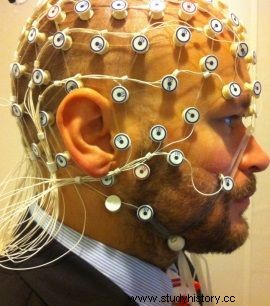
Electroencephalography (EEG) is the merit of a Pole!
Adolf Beck was born in Kraków in 1863. He graduated from St. Jacek and in 1884 he started medical studies at the Jagiellonian University.
He started his research work already during his studies, and in 1890 he defended his doctoral dissertation on the study of the brain with electricity.
By the way, he discovered one of the most important diagnostic methods of neurology, used all over the world today.
8. Ary Szternfeld. It was he who led people into space
Ary Szternfeld was born in 1905 in Sieradz. His father traded in flour. Ary graduated from the Jewish gymnasium in Łódź, and then began his studies, first in Poland and then in France.
In 1927, Szternfeld graduated in electrical engineering and started working in the profession. However, he has not given up on his true passion.

Without Ary Szternfeld, Sputnik would not have been launched.
Ary has always looked at the stars longingly, and once he acquired the necessary knowledge, he began to plan space flights.
He marked out something like cosmic paths needed to determine the appropriate trajectories of orbital flights. He calculated, among other things, the orbit into which the first artificial satellite "Sputnik" was introduced.
If it weren't for him, the Russians would not be the first space conquerors.
7. Kazimierz Funk. Discoverer of vitamins
Refrigerated juice multivitamin, vitamin cream, and a dietary supplement with vitamins. And if it weren't for Kazimierz Funk, who discovered them and coined the term "vitamin", we probably wouldn't know what it is.
Kazimierz Funk was born in Warsaw in 1884 into a family with Jewish roots. He graduated in medicine and chemistry from prestigious European universities. When he was studying the causes of beriberi in a London research facility, he made a surprising discovery.
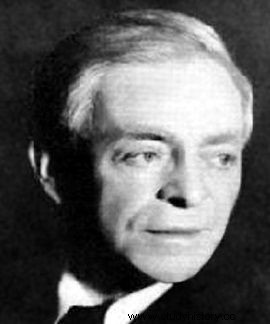
This nice old man gave the world vitamins. Kazimierz Funk was a Polish Jew.
In 1911, he extracted an unknown substance from the rice bran, which we know as vitamin B1. Kazimierz Funk continued his research and treated patients with avitaminosis (extreme vitamin deficiencies). At the same time, he suspected that deficiencies of certain vitamins could cause other diseases as well.
Although he spent many years abroad and even had American citizenship, he never renounced Polishness.
6. Max Factor. He was the one who created make-up
Maksymilian Faktorowicz started out modestly, but his life developed into a real epic. He was born in 1872 in Zduńska Wola, in a large family. As a fourteen-year-old he started an apprenticeship with a pharmacist and a few years later he had his own drugstore and wig shop in Moscow .
Faktorowicz's talent was so great that he soon advised the most important people at the tsarist court on the issue of cosmetics . It might seem that such a career should be the pinnacle of his dreams, but Maksymilian did not feel safe. That's why he took his family and fled to the USA in 1904.
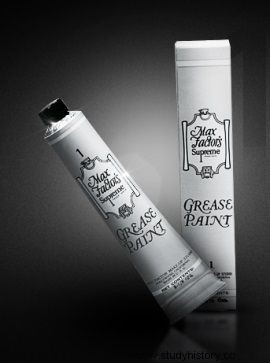
In 1914, Max Factor released the first make-up foundation, which made the task of actors much easier. (The photo comes from the website maxfactor.pl).
Overseas he had to start almost from scratch as Max Factor. Over the years he has been overcoming professional failures and personal tragedies to finally find his calling in the world of cinema.
When Factor started creating color makeup products, it was like a revelation to Hollywood actors.
It was enough for Max's company to launch makeup products for ordinary women, and the country was flooded by a wave of divorce suits from terrified husbands . It was Max Factor who coined the term make-up. And most importantly, he gave the world the first cinematic lover, enhancing the beauty of Rudolf Valentino.
5. Ludwik Hirszfeld. It is thanks to him that you know your blood type
Ludwik Hirszfeld was born in Warsaw to an assimilated Jewish family in 1884. Unlike Gelbfisz, he was carefully educated.
In 1907 he graduated from medical studies in Germany. Soon after, Hirszfeld became an assistant to the German professor Emil von Dungern.
He made history in medicine thanks to his work on blood groups. Although the first discoveries in this area were made by Karl Landsteiner at the beginning of the century, it was only Dungern and Hirszfeld that brought order to serology. Thanks to them, we know blood groups 0, A, B and AB today.
After returning to Poland in 1920, Hirszfeld continued his research and it was he who determined the Rh factor and investigated the phenomenon of serological conflict.
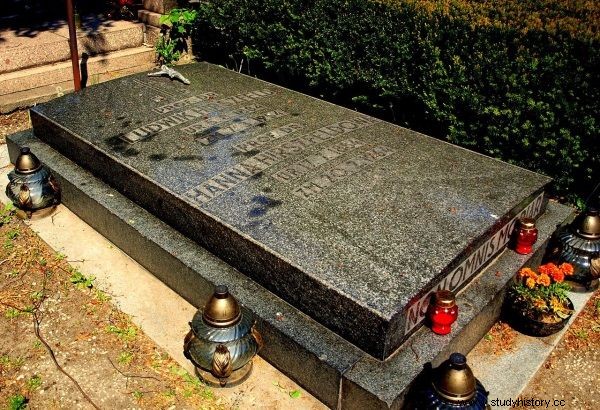
It is not known when Hirszfeld got baptized. He was already getting married as a Christian, and he was buried at the Catholic cemetery in Wrocław.
The research of Dungern and Hirszfeld saved the lives of countless transfusion patients around the world. The determination of blood groups made it possible to avoid errors during its transfusion. The discovery also began to be used in forensics.
More than one suspect has been exonerated because his blood group does not match the one found at the crime scene. Researchers also looked at the mechanisms of inheritance of blood groups, which, once described by them, became the first methods of establishing paternity.
4. Ludwik Zamenhof. Creator of Esperanto
"Historiaj Vidindaĵoj" would be the name of our website in the international language of Esperanto. Like Latin or French in the past, this new creation was to become a universal means of communication. Ultimately, Esperanto did not catch on and the global language is now English.

Ludwik Zamenhoff. A man who wanted to give people a universal language.
It could all be summed up with a simple shrug if it were not for a minor fact. Esperanto was created by a Pole, specifically a Polish Jew, Ludwik Zamenhof. Already at the age of 10, he was sensitive to communication barriers between the nations living in his native Białystok.
The boy expressed himself through literature and wrote the drama "The Tower of Babel, or the Białystok tragedy in five acts". Perhaps it was then that he started dreaming about creating a language that everyone could communicate with, no matter what nation they belong to ...
3. Helena Rubinstein. She taught women to take care of themselves
Not only Maksymilian Faktorowicz, but also Chaja Rubinstein dealt with improving the beauty. She was born in Kraków's Kazimierz in 1870. Her father Hercel Naftali Rubinstein traded kerosene and eggs. The family was living in poverty.

The young Helena Rubinstein seen by the French painter Paul César Helleu. Madame Rubinstein loved her own portraits. Of the greatest celebrities, only Picasso failed to get him to immortalize her.
Many years later, the American millionaire Helena Rubinstein in her autobiography will re-create this part of her life so that it would fit into a fabulous career. In 1889, Chaja, who has since decided to be Helena, set off into the world. Through Australia and Europe, it ended up in the United States.
She started with a jar of a simple home-made moisturizing cream, and years later she would build one of the greatest beauty empires in the world.
Above all, however, Helena opened the first beauty salon in Europe, located in London. Since 1917, the company krakowianki produces cosmetics on an industrial scale, begins its global expansion, which continues to this day.
2. Jakub Węgierko. Thanks to it, you can live with diabetes
In 1889, Mieczysław Węgierko, a gardener of the Jewish cemetery in Okopowa in Warsaw, and his wife Justyna Obstblum, were born. Nobody expected how much little Jacob would do for the sick all over the world.
Jakub Węgierko graduated from medical studies at the University of Zurich and did his doctorate in Bern. In the 1920s he was a doctor in the Polish army. After becoming a civilian, he did research work and in 1926 he created something that made the life of diabetics a lot easier. A method of treating diabetes mellitus with high doses of insulin, supported by diet.
1. Hilary Koprowski. The man who stopped polio
Hilary Koprowski was born in 1916 in Warsaw to a family with Jewish roots. He could become a famous musician (he graduated from the Warsaw Music Conservatory and Artistic Academy of St. Cecilia in Rome), but he chose a medical career. Lucky for millions of people.
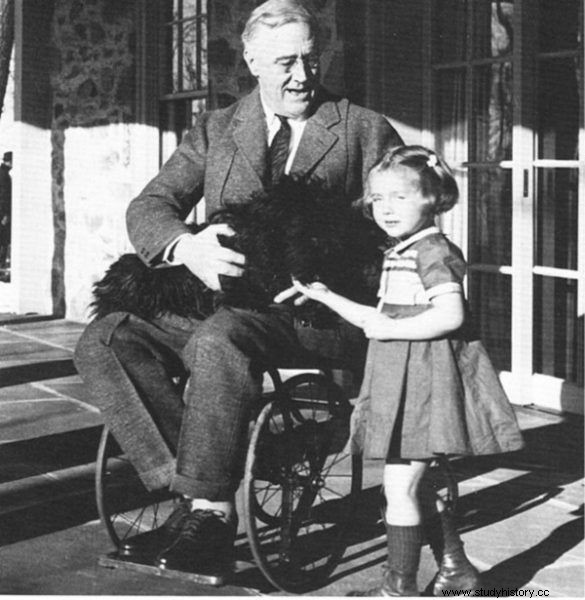
The most famous polio sufferer was Franklin D. Roosevelt.
Hilary Koprowski, after years of research, created a vaccine against the polio virus, which causes the dangerous Heine-Medin disease. He was working in the United States at the time.
In 1952, a real virus epidemic broke out there. 50,000 people fell ill, several percent of whom died. Only the Koprowski vaccine stopped the plague. Therefore, when polio hit Poland in the 1950s, it was turned to him for help. Once again the epidemic has stopped.
Sources:
- Fred E. Bernsten, Max Factor , ZNAK Social Publishing Institute, Krakow 2013.
- Michele Fitoussi, Helena Rubinstein. The Woman Who Invented Beauty , Warsaw 2013
- Ludwik Hirszfeld, The Story of One Life , Warsaw 2000.
- Polish Jews. Unusual Stories, edited by Magdalena Prokopowicz, Warsaw 2010.
- Walter Żelazny, Ludwik Zamenhoff:life and work, reception and reminiscences, selection of writings and letters , Krakow 2012
